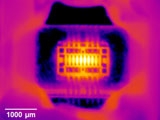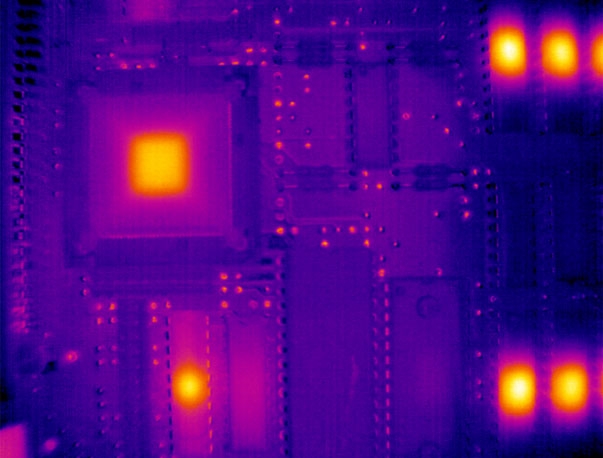Thermal characterisation
Infrared thermography can be used for non-destructive and contact-free measurements of heat radiation from the surface. High-resolution measurements can register very small objects (10µm per pixel) and rapid transient processes (up to approx. 3kHz). Combination with other temperature sensors such as thermo-elements, PT100 sensors, NTCs, and special Rth or Zth arrays opens up a range of options for the thermal characterisation of products and materials:
- Determining the hot spot temperature for defined operational states. Comparison of operational states by difference image evaluation
- Measuring transient processes e.g. powering up or switching for functional tests and trouble shooting
- Characterisation of the static and transient temperature behaviour for the verification of FEM analyses
- Measuring thermal contact resistances, e.g. for high current connectors
- Finding causes for component failure, e.g. short circuits between conductors or component defects
Measurements can be carried out at ambient temperatures in the laboratory, or under defined conditions:
- Test chamber without external irradiation
- Measurements at elevated temperature: IR-temperature measurements through an IR-transparent window
- Measurement under controlled air flow (wind tunnel)
In addition to passive IR-thermography (warming due to the power loss of the test object), active IR-thermography such as lock-in thermography can be used, e.g. with excitation by lasers, flash lamps, ultrasound, or eddy currents.
 Fraunhofer Institute for Reliability and Microintegration IZM
Fraunhofer Institute for Reliability and Microintegration IZM
